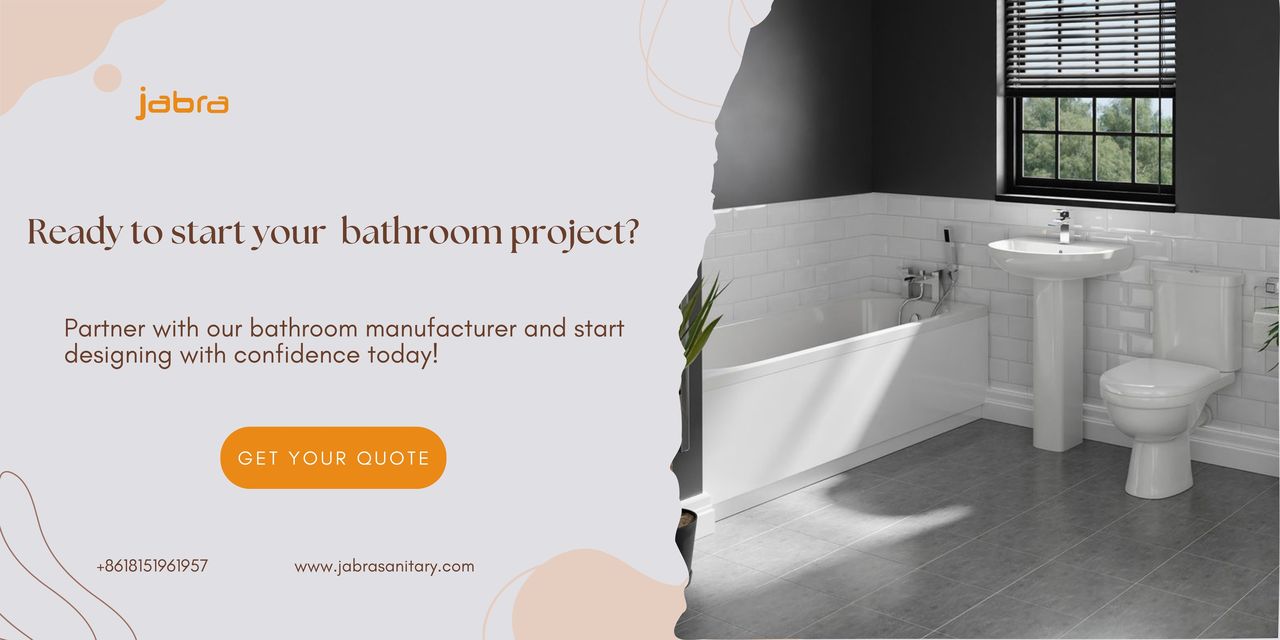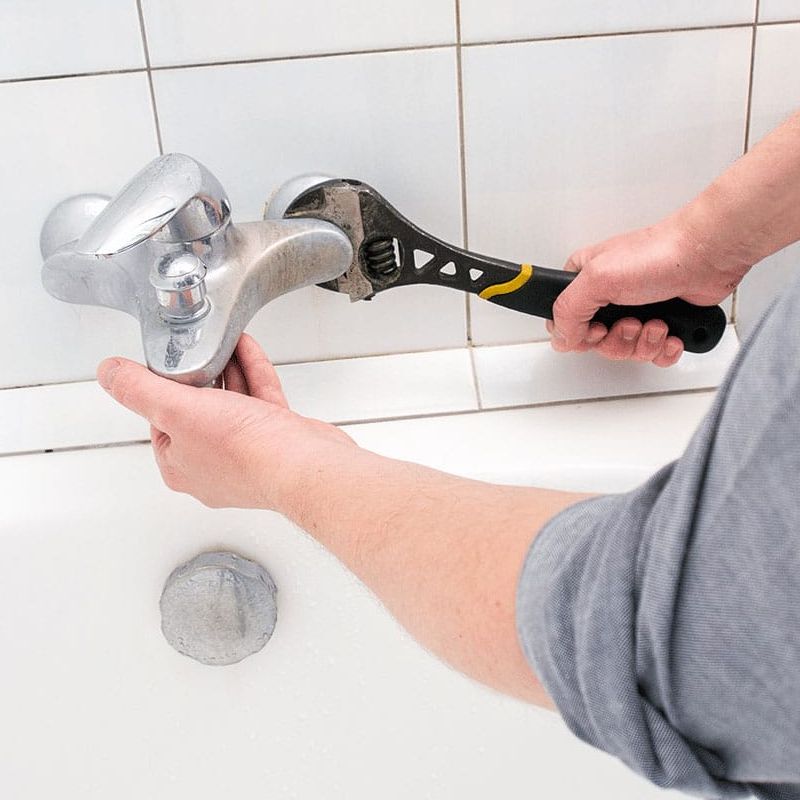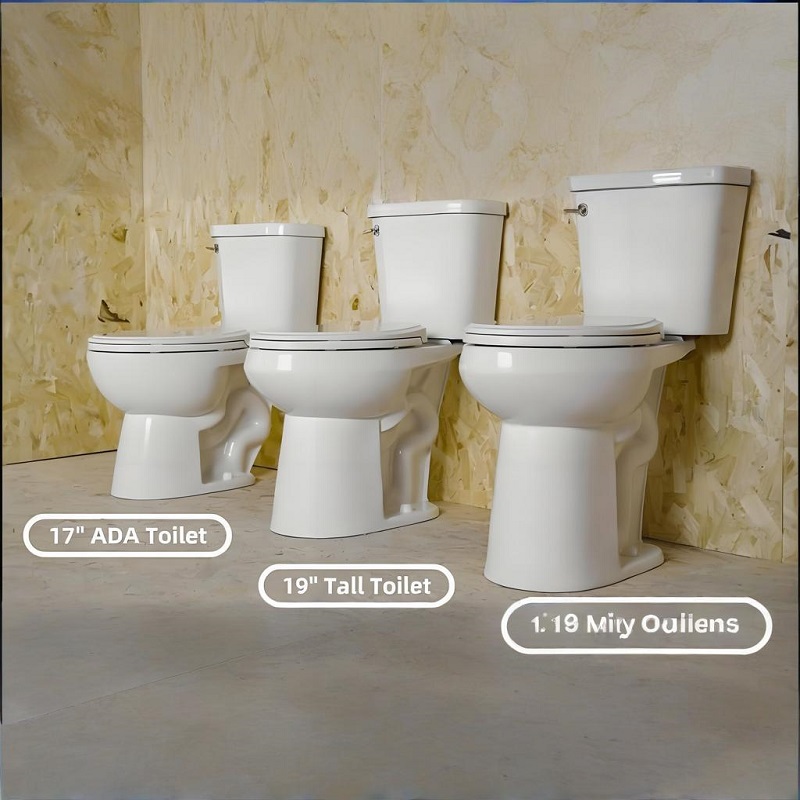 English
English
Jabra Sanitary is a sanitaryware supplier offering toilets, sinks, faucets, bathtubs, etc., at competitive prices. If you're a distributor, wholesaler, or project contractor, get a quote today!
 $23.9 Limited-time Offer
$23.9 Limited-time Offer Consignment Policy
Consignment Policy 20 Years of Experience
20 Years of Experience
If you've ever noticed those annoying black, green, or white spots creeping up in your shower, around your sink, or on your bathroom walls, you're not alone. Mold is a common nuisance in bathrooms, and we know how frustrating it can be to deal with.
But don't worry—we're here to walk you through everything you need to know backed by expert recommendations about how to get rid of mold in bathrooms.
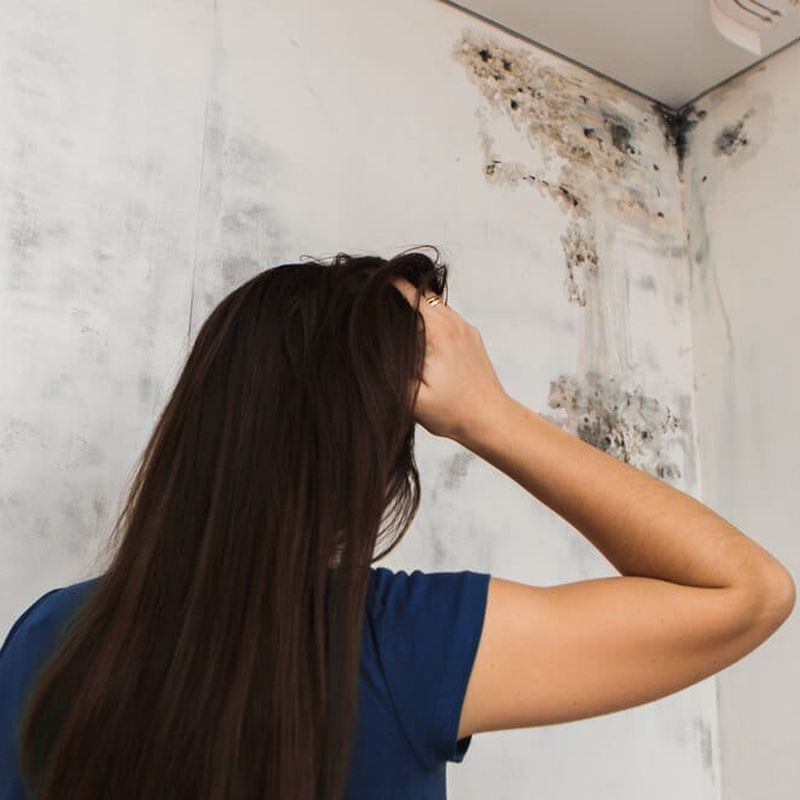
Table of Contents
What Causes Mold Growth in Bathrooms?
How to Identify Mold in Your Bathroom
Effective DIY Mold Removal Methods
How to Remove Mold From Painted Walls Permanently
When to Call a Professional for Mold Removal
How to Prevent Mold from Returning in Your Bathroom
Natural Alternatives for Mold Removal and Prevention
Safety Tips When Removing Mold
FAQs
Conclusion
What Causes Mold Growth in Bathrooms?
Bathrooms are like a playground for mold—warm, damp, and often poorly ventilated, they provide the perfect conditions for mold to thrive. But what causes mold in the bathroom?
Mold needs three things to grow: moisture, warmth, and a food source (like dust or organic materials). According to the EPA, 70% of bathrooms have recurring mold due to humidity. Every time you take a shower, run a bath or even wash your hands, you're adding humidity to the air.
If that moisture doesn't have a way to escape—say, through an exhaust fan or an open window—it sticks around, creating a damp environment where mold can flourish.
How to Identify Mold in Your Bathroom
Spotting mold early can save you a lot of trouble down the line. What does bathroom mold look like? Mold isn't always obvious, but once you know what to look for, you'll be able to catch it before it spreads.
Mold can appear in a variety of colors, shapes, and textures, but it's usually easy to recognize once you know the signs. Look for visible spots that are black, green, white, or even orange. These spots might be fuzzy, slimy, or powdery, and they often come with a musty smell.
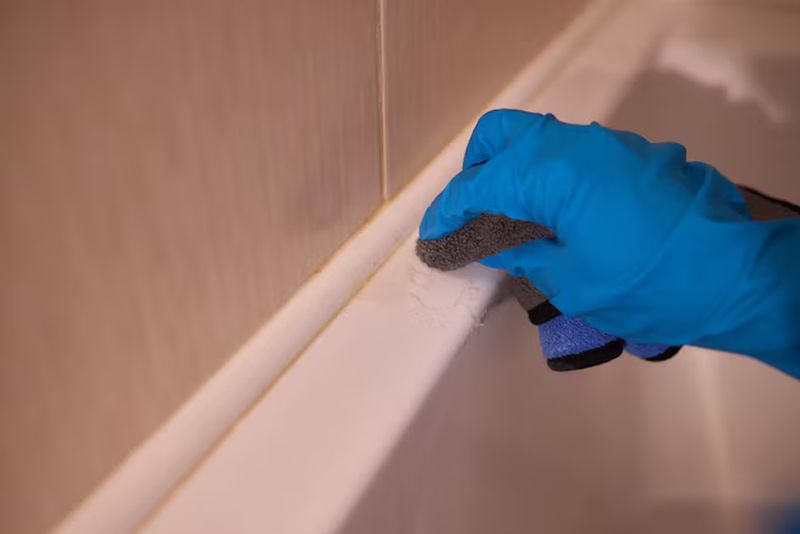
But where should you be looking? Mold loves damp, warm areas, so it tends to grow in specific spots in your bathroom. Check these common areas:
- Grout lines between tiles, where water can get trapped and stay damp.
- Caulking around your sink, bathtub, or shower, especially if it's cracked or peeling.
- Corners and crevices, like where the walls meet the floor or around the edges of your shower.
- Ceilings and walls, particularly if there's been a leak or poor ventilation.
- Behind tiles or under sinks, where moisture can hide and mold can grow out of sight.
Here's a quick tip: If you see small, dark spots that seem to spread over time, especially in damp areas, it's likely mold. Don't ignore it—mold can grow fast and cause bigger issues if left unchecked.
Effective DIY Mold Removal Methods
What to do about mold in bathrooms? Spotting mold in your bathroom can feel like a persistent issue requiring careful handling, but don't stress—you can handle it yourself with some easy, wallet-friendly tricks!
DIY bathroom mold removal is all about using stuff you already have at home to zap mold away without breaking the bank.
White Vinegar
White vinegar is a natural mold-killer that's non-toxic and super easy to use. It's perfect for most surfaces and won't leave you coughing from fumes.
How to Use: Grab a spray bottle and fill it with undiluted white vinegar. Spray it all over the moldy spot, let it chill there for an hour, then scrub it with a brush or sponge. Rinse with warm water, and you're done!
Best For: Tiles, grout, walls, and even shower curtains.
Baking Soda
Baking soda is a gentle, natural option that not only kills mold but also sucks up moisture—mold's best friend.
How to Use: Mix a quarter tablespoon of baking soda with a little water to make a paste. Spread it on the mold, scrub it in, and let it sit for 10-15 minutes. Rinse it off with warm water and dry the spot well.
Best For: Tiles, grout, walls, and fabrics like towels or bath mats.
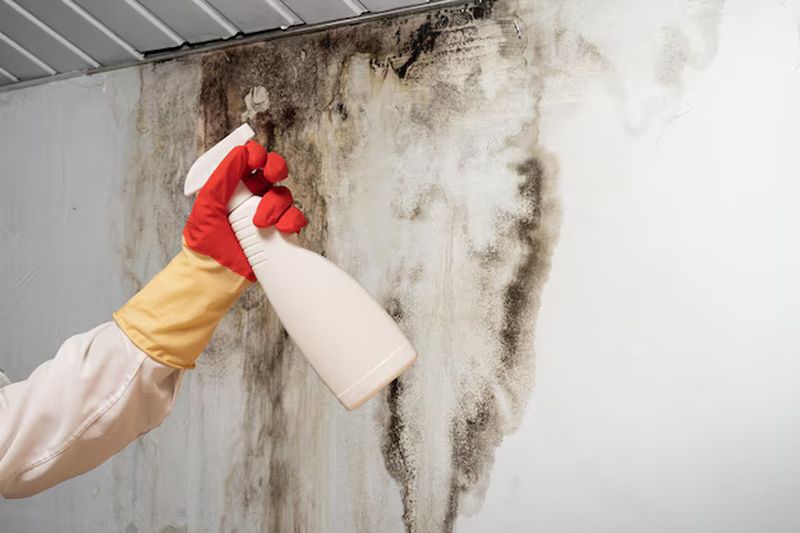
Hydrogen Peroxide
Hydrogen peroxide is a step up in strength and great for tackling mold on all sorts of surfaces, especially fabrics.
How to Use: Pour 3% hydrogen peroxide into a spray bottle. Spray it on the mold, wait 10 minutes, then scrub it off. Wipe it clean with a damp cloth and let it dry.
Best For: Tiles, grout, walls, fabrics, and even wood.
Bleach Solution
Bleach is the heavy hitter. Use it carefully for stubborn mold on the right surfaces.
How to Use: Mix one part bleach with two parts water in a spray bottle. Spray it on the mold, let it sit for 10 minutes, scrub it, then rinse well with water and dry.
Best For: Non-porous surfaces like tiles, glass, and metal (skip wood or fabric).
Here's a quick cheat sheet to pick the best method for your mold problem:
Method |
Best Surfaces |
Key Steps |
|---|---|---|
White Vinegar |
Tiles, grout, walls, fabrics |
Spray, wait 1 hour, scrub, rinse |
Baking Soda |
Tiles, grout, walls, fabrics |
Apply paste, scrub, wait 10-15 mins, rinse |
Hydrogen Peroxide |
Tiles, grout, walls, fabrics, wood |
Spray, wait 10 mins, scrub, wipe clean |
Bleach Solution |
Tiles, glass, metal (non-porous only) |
Spray, wait 10 mins, scrub, rinse |
How to Remove Mold From Painted Walls Permanently
How to remove mold from bathroom walls? Mold on painted walls can feel like an unwelcome guest that just won't leave. It's unsightly, can damage your paint, and might even signal bigger problems if ignored. The good news? You can banish it for good with the right approach.
Step 1: Gear Up and Prep the Area
Mold spores can irritate your skin, eyes, and lungs, so suit up with:
- Rubber gloves
- A mask (N95 if you have it)
- Goggles
Open a window or flip on the exhaust fan for good airflow. Lay down a drop cloth or old towels to catch drips and keep your space tidy.
Step 2: Clean the Mold
You'll need a gentle cleaner to protect the paint. Try this simple mix:
Solution: 1 part mild dish soap + 10 parts water in a spray bottle
- Spray the moldy spot until it's soaked.
- Wait 5-10 minutes to let it loosen up.
- Scrub lightly with a soft sponge or cloth—don't go too hard, or you might damage the paint.
- Rinse with clean water and dry with a towel.
For tougher mold, step it up with vinegar:
Solution: 1 cup white vinegar + 1 gallon water
- Spray, wait 10 minutes, scrub gently, rinse, and dry.
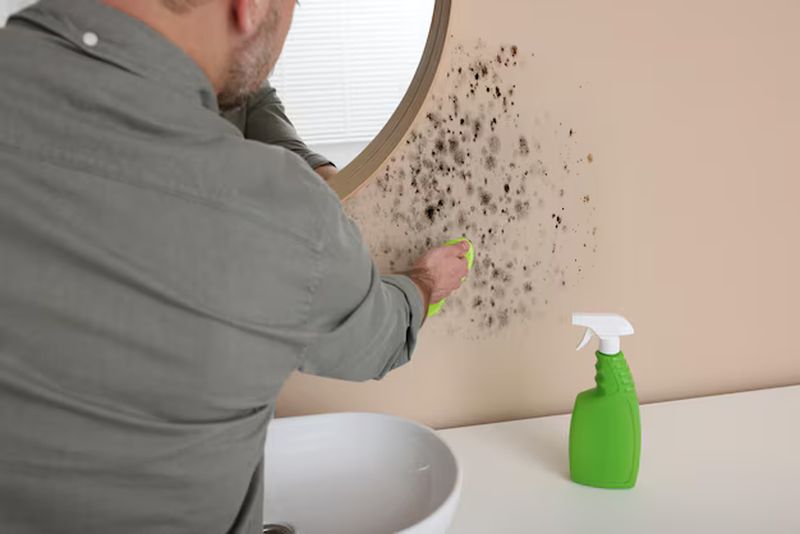
Step 3: Dry It Out
Mold thrives in dampness, so drying is non-negotiable. Point a fan at the wall or use a dehumidifier. Keep the area ventilated for 24 hours to be sure.
Step 4: Keep Mold Away
Permanence means prevention. Here's how:
- Fix leaks: Hunt down and repair any plumbing or caulking issues.
- Boost ventilation: Run an exhaust fan or crack a window after showers.
- Mold-resistant paint: Repaint with a bathroom-specific or mold-resistant formula.
- Wipe down: Squeegee or towel off walls post-shower to cut moisture.
When to Call a Professional for Mold Removal
You've been doing an awesome job trying to tackle that mold in your bathroom on your own! But sometimes, mold can get a little out of hand, and that's when it's smart to call in the professionals. IICRC recommends professionals for 10 sq. ft.
Here are the key signs that DIY methods won't cut it and you need expert help:
Large mold patches: If the mold covers more than 10 square feet—like a big section of your wall—it's too much for a spray bottle and elbow grease. Pros have the gear to handle it safely.
Hidden mold: Mold loves sneaky spots like behind walls, under floors, or in ceilings. If you smell something musty but can't see the mold, professionals can track it down and remove it without tearing your house apart.
Stubborn mold that keeps coming back: Cleaned it three times and it's still there? There's likely a deeper issue, like a leak. Pros can fix the cause, not just the symptom.
Mold in your HVAC or ducts: Mold in your heating or cooling system can spread spores everywhere.
Health worries: If you or anyone at home has allergies, asthma, or breathing problems, mold can make things worse.
Health Effect |
Description |
|---|---|
Respiratory symptoms |
Exposure to damp and moldy environments can cause nasal congestion, coughing, wheezing, sore throat, and itchy eyes or skin. |
Worsening of asthma |
Mold exposure can trigger asthma attacks, even in individuals who are not allergic to mold. Source: Centers for Disease Control and Prevention (CDC) |
Allergic reactions |
People who are allergic to mold may experience symptoms similar to hay fever, such as sneezing, runny nose, and itchy eyes. |
Severe reactions |
Individuals with weakened immune systems or chronic lung diseases may develop lung infections after mold exposure. |
Damage to your home: If mold's eating into your walls or floors, it's a structural issue now. Professionals can repair the damage while getting rid of the mold.
How to Prevent Mold from Returning in Your Bathroom
Preventing mold from coming back is way easier than scrubbing it away later. By controlling humidity, fixing leaks, cleaning regularly, using the right paint, and boosting ventilation, you'll keep your bathroom fresh and mold-free.
Control Humidity
Mold thrives in moisture, so keeping humidity low is your first line of defense. Here's how:
- Use exhaust fans: Run your bathroom fan during and after showers for 15-20 minutes to pull out damp air.
- Dehumidifiers: If your bathroom lacks a window or good airflow, a dehumidifier can work wonders. Aim to keep humidity below 50%.
- Try a hygrometer: This little gadget measures humidity levels, helping you stay on top of things.
Fix Leaks Fast
Even small leaks can lead to big mold problems over time. Stay proactive:
- Check for drips under sinks, around toilets, or in showerheads—fix them right away.
- Watch for clues like water stains or musty smells, which could signal hidden leaks. Investigate and repair ASAP.
Clean Regularly
A clean bathroom is a mold-resistant bathroom. Make it routine:
- Wipe down surfaces after use, especially in the shower, to stop moisture buildup.
- Use mold-inhibiting cleaners or a simple water-and-vinegar mix to keep mold at bay.
- Peek at hidden spots—behind toilets or under sinks—for early mold signs.
Use Mold-Resistant Paint
If mold keeps returning, repaint with a mold-resistant formula. These paints have additives to fight mold growth and are perfect for bathrooms. They cost a bit more, but they're worth it for lasting protection.
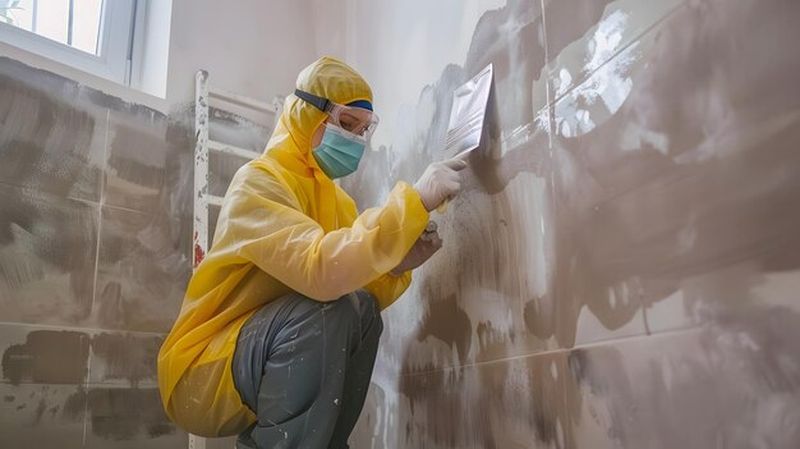
Boost Ventilation
Good airflow is mold's enemy. Improve it with these steps:
- Open a window during and after showers, even just a crack.
- No window? Use a dehumidifier or leave the door open to let air circulate.
- Upgrade if needed: If your exhaust fan struggles, consider a stronger model with a higher CFM (cubic feet per minute).
Natural Alternatives for Mold Removal and Prevention
If you're looking for a way to tackle bathroom mold without harsh chemicals, you're in the right place. Natural alternatives are a fantastic choice—they're safer for you, your family, and the planet, and they often smell a whole lot better too.
One of the best natural options? Essential oils! They pack a punch against mold thanks to their antimicrobial properties.
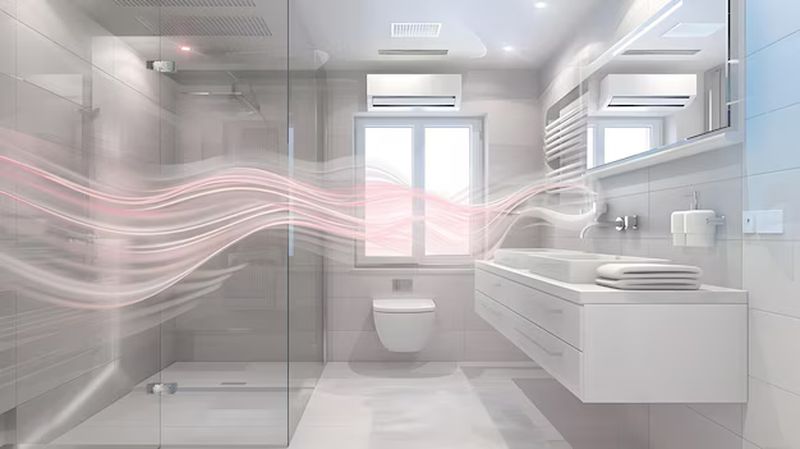
Tea Tree Oil: This one's a superstar when it comes to fighting mold. It's antifungal and antibacterial, so it can wipe out mold spores like a pro. Mix 10-15 drops with a cup of water in a spray bottle, spritz it on moldy spots, and let it sit for a few hours. Then, wipe it off with a clean cloth.
Cinnamon Bark Oil: Not only does this oil smell like a cozy bakery, but it also has strong antifungal powers. It's great for preventing mold growth. Add 5-10 drops to your cleaning solution or diffuse it in the bathroom to keep the air fresh and mold-free.
Clove Bud Oil: Clove oil is another mold-busting champ, especially for tough cases. Mix 10 drops with a cup of water or vinegar, spray it on the mold, let it sit for 10-15 minutes, then scrub away. It's got a warm, spicy scent that's surprisingly pleasant.
Lemon Oil: Lemon oil is a cleaning powerhouse with a bright, uplifting scent. It can help break down mold and stop it from spreading. Add 10 drops to your cleaning mix or use it in a diffuser to keep the bathroom smelling fresh and clean.
Rosemary Oil: Rosemary oil isn't just for cooking—it's got antimicrobial properties that can help fight mold. Mix 10 drops with water or vinegar for a natural mold-fighting spray. It's also uplifting, so it's a nice pick-me-up while you clean.
These oils are natural, but they're still potent, so here are a few tips to use them safely:
- Always dilute them with water or a carrier like vinegar—never use them at full strength on surfaces.
- Test a small, hidden area first to make sure they don't damage your bathroom finishes.
- Keep them out of reach of kids and pets, and avoid getting them on your skin undiluted.
Safety Tips When Removing Mold
Removing mold from your bathroom is a great way to keep our homes clean and healthy, but we need to stay safe while doing it. Mold can cause issues like allergies or breathing problems, and some cleaning products can be tricky if not handled right.

Key Safety Tips
Wear personal protective equipment (PPE): Before we start, let's gear up with gloves, a mask, and goggles(N95 masks, nitrile gloves). These keep our skin, lungs, and eyes safe from mold spores and cleaning chemicals.
Mold spores are tiny and can float around when disturbed, so a mask is a must. Gloves protect our hands from both mold and strong cleaners, and goggles shield our eyes from splashes.
Work in well-ventilated areas: Let's make sure the bathroom has plenty of fresh air. Open windows and turn on fans to keep the air moving.
This cuts down on the mold spores we might breathe in and helps the area dry out faster, which is great for preventing mold from sneaking back. If there's no window, an exhaust fan or a portable fan works wonders too.
Avoid mixing cleaning agents: We need to be super careful with cleaning products. Never mix bleach with ammonia or other cleaners—it can create toxic fumes that are dangerous to breathe.
Let's stick to one product at a time and always check the label for instructions. If we're using bleach, extra ventilation and our PPE are key to staying safe.
FAQs
Dealing with mold can bring up a lot of questions, especially when it comes to safety and effectiveness. In this section, we'll answer some of the most common questions people ask about mold removal in bathrooms.
What kills 100% of mold?
Using a bleach solution or commercial mold removers can knock out most mold on hard surfaces. Natural options like white vinegar or hydrogen peroxide are also great for smaller areas.
Can you paint over mold?
Painting over mold isn't a good idea. It might look better for a little while, but the mold is still there, growing behind the paint. Plus, it can make the problem worse by trapping moisture.
The best thing to do is to clean the mold first, let the area dry completely, and then paint with mold-resistant paint to help prevent future growth.
Can mold on walls make you sick?
Yes, mold on walls can make some people sick. It can cause allergies, sneezing, coughing, or even breathing problems, especially for those with asthma or weak immune systems.
Is it safe to clean black mold yourself?
Cleaning black mold yourself can be safe if you take the right steps. For small areas—less than about 10 square feet—you can usually handle it by wearing gloves, a mask, and goggles, and using a good cleaner like bleach or vinegar.
However, if the mold covers a large area or if you have health concerns, it's better to call a professional. They have the tools and experience to remove black mold safely without risking your health.
Can you sleep in a room after using mold remover?
It depends on the mold remover you use. Some products, especially those with bleach, can leave strong smells that might bother you. It's best to let the room air out for a few hours after cleaning. Open windows and use fans to help the fumes go away.
If the smell is still strong, it's safer to wait before sleeping in the room. Always check the product label for specific instructions on ventilation and safety.
How long does professional mold removal take?
Professional mold removal can take anywhere from a few hours to several days. For small areas, it might be quick, but larger problems or mold hidden in walls can take longer. The pros will also need time to make sure the area is completely dry and to prevent mold from coming back.
Conclusion
Mold in the bathroom is a common problem, but it doesn't have to be a permanent one. In this guide, we've walked you through everything you need to know to get rid of mold in bathrooms. 85% of users prevented mold with these steps.
But the real key to winning the battle against mold is how to prevent mold in bathrooms. By keeping your bathroom dry, using exhaust fans, fixing leaks quickly, and cleaning regularly, you can stop mold from coming back. These small steps can make a big difference in keeping your space clean and healthy.
If you're ever unsure or if the mold feels like too much to handle, don't worry—help is just a call away. For those tough cases, we recommend reaching out to the experts at jabrasanitary.com (24/7 emergency service). They specialize in mold removal and prevention, using safe, effective methods to make sure your bathroom stays mold-free for good.







